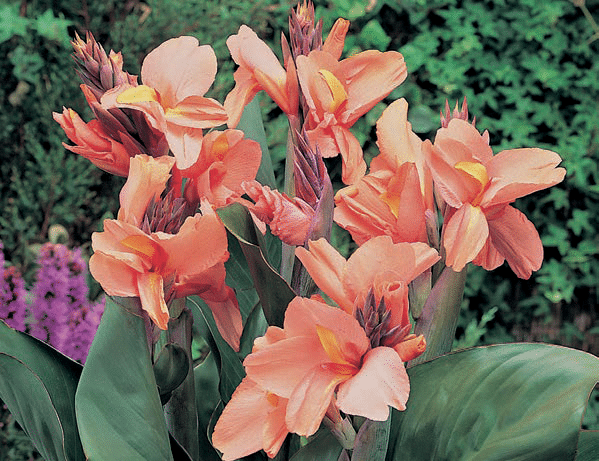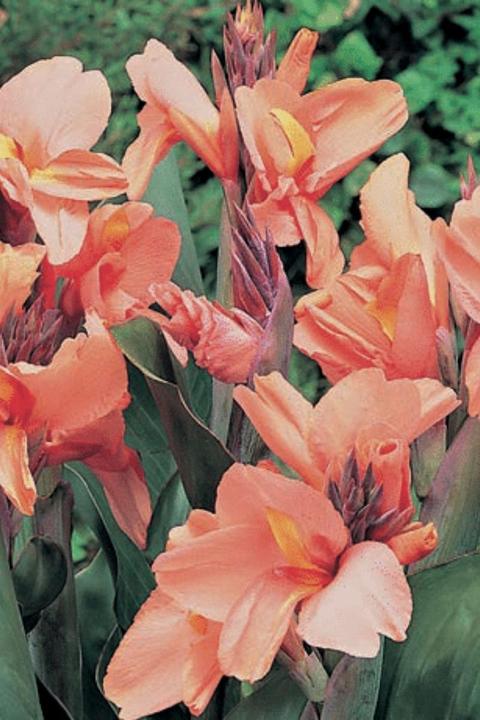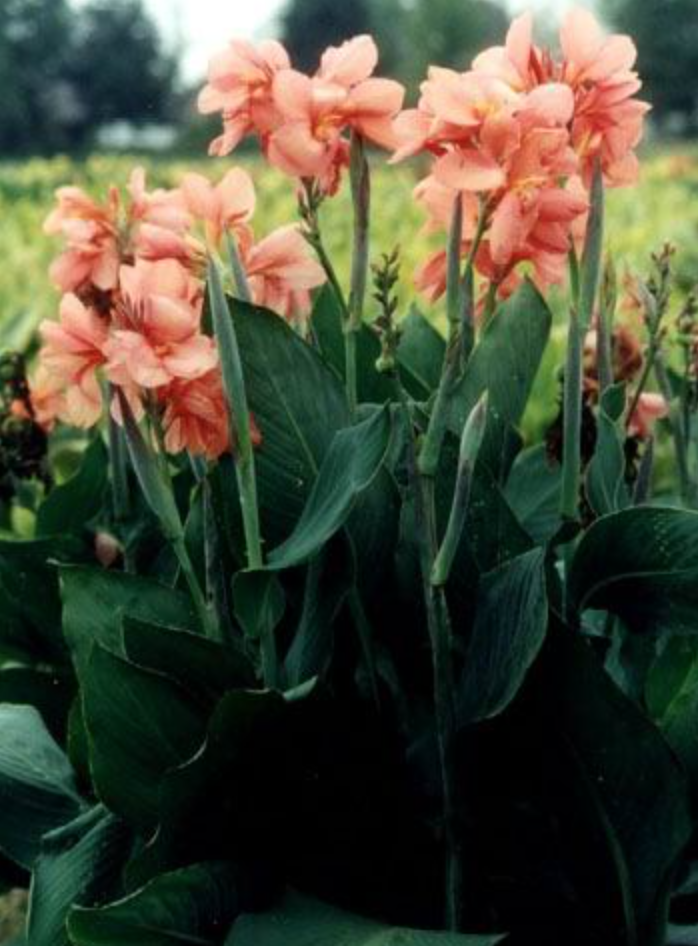Description
Apricot Frost Canna Lily Plants are banana relatives with broad leaves and bright flower clusters that reproduce both by seeds and by rhizomes. This exotic showpiece can quickly fill a bed with 4-foot canes, spade-shaped leaves, and flowers from mid-summer to the first frost. Cannas are usually grown for their ornamental value, but Apricot Frost Canna Lily Plants have edible leaves and roots. Canna edulis (also called Canna indica) is the traditional Canna used for food, but all Cannas are edible. Apricot Frost Canna has bright orange blooms that can be solid orange, or also display infrequent specks of darker red-orange or lighter peach.
The Apricot Frost Canna Lily Plant is suited for growing outdoors in USDA Zones 8 to 11, and in pots in Zones 4 to 11. The rhizomes can reach up to one foot in length, and the edible leaves grow to twelve inches by six inches or more. The Apricot Frost Canna Lily Plant likes full sun or partial shade, and damp, rich soil. They are great along pond shores or in low-lying areas where lack of drainage may prohibit other plants from thriving. Add the striking Apricot Frost Canna Lily Plant to your edible landscape and experience one of the world’s oldest known food crops.
Apricot Frost Canna Lily Plant Care
Apricot Frost Canna Lily Plants can be grown from previously started potted plants, rhizomes, or seeds. Dormant Apricot Frost Canna rhizomes can be planted at any time in warm climates, or after chances of frost in spring or summer in colder locations. Plant the roots 2 to 3-inches deep in rich soil within a location that gets full or partial sun. Plant new Apricot Frost Canna rhizomes spaced between 1 to 2-feet apart in a sunny spot. The more sun the Apricot Frost Canna Lily Plants receive, the more blooms they will produce.
Apricot Frost Canna Lily Plants can also be grown from seeds. The tall flower stalks produce showy blooms that remain for a week or so, then once the flowers fall, the buds develop into green, fuzzy seedpods. Remove the seeds from the pods once the pods dry and turn brown on the plant. Plant individual seeds about 1-inch deep in 4-inch pots with potting soil and keep soil moist until sprouts appear. Plant newly potted seedlings when roots appear at the pot drainage holes.
Apricot Frost Canna Lily Plant Uses & Harvesting
Apricot Frost Canna Lily Plant leaves, new shoots, and rhizomes are edible. Harvest the bright green new shoots in spring and use them in salads or added to other vegetables when cooking. Apricot Frost Canna Lily Plant shoots are popular in Asia for use in stir-fry, or steamed with celery, spinach, and carrots to make a side dish. The leaves can be used to wrap ground meats for cooking and are sometimes used to wrap a mixture of ground beef and rice, which is then steamed and eaten much like a burrito.
Apricot Frost Canna Lily Plant rhizomes can be harvested one year after planting. Cut the stalks at ground level and dig up the roots in much the same way as you would when harvesting ginger. Boil or bake the unpeeled rhizomes until they are white and somewhat tender. Cooking Canna can take some time. Boil roots for an hour, or bake for two hours, until a sliced root reveals a shiny, starchy interior that can be scooped out. In Peru and some Pacific Islands, Canna roots are baked in coal ovens for as long as twelve hours.
Advice
Apricot Frost Canna Lily Plants are related to ginger and bananas. As such they like similar growing conditions. This makes Apricot Frost Cannas good companion plants for both ginger plants and bananas. Plant alternating groups of bananas, ginger, and Apricot Frost Canna Lily Plants along the edge of a property line to create a beautiful, and edible border. You can also grow Apricot Frost Canna Lily Plants around the outer perimeter of a large pot surrounding a taller banana plant in the center to create a tropical showpiece that is both beautiful and edible.
Mulch Apricot Frost Canna Lily Plants with woodchips or composted leaves and plant materials such as grass clippings or banana leaves. Keeping the ground mulched helps retain moisture, discourages weeds, and allows the Canna roots to become large and succulent. The sturdy Apricot Frost Canna Lily Plant stalks will have no problem pushing through three or four inches of mulch, so they will spread with ease. Water Apricot Frost Canna Lily Plants once per week or when soil dries down to one inch deep.










What others are saying
There are no contributions yet.